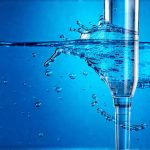Hydration is often treated as a simple checklist – drink eight glasses of water a day, done! But this one-size-fits-all approach ignores the incredible variability in our individual needs and daily lives. Factors like activity level, climate, diet, even stress can dramatically impact how much fluid we lose and therefore need to replenish. Focusing solely on intake without considering output is akin to filling a bucket with no drain – eventually, you’ll either overflow or misjudge the actual capacity. True hydration isn’t about hitting an arbitrary number; it’s about maintaining balance, recognizing your body’s signals, and responding accordingly.
This article explores a more nuanced approach: self-regulated hydration based on daily output awareness. It moves beyond generic recommendations and empowers you to understand your fluid needs, not just by how much you drink, but by paying attention to how fluids leave your system. This method isn’t about restriction or obsessive tracking; it’s about building a deeper connection with your body and fostering sustainable hydration habits that support overall wellbeing. It promotes mindful awareness of internal cues rather than relying on external rules, leading to more effective and personalized hydration strategies.
Understanding Fluid Balance & Output
Fluid balance is the dynamic equilibrium between fluid intake and output. When these are in harmony, our bodies function optimally. However, we often prioritize intake – consciously drinking water throughout the day – while largely ignoring output. This oversight leads to inaccurate assessments of hydration status. Our bodies lose fluids through several key avenues:
- Respiration (breathing)
- Perspiration (sweating), which varies greatly with activity and temperature
- Urination, a primary indicator of hydration levels
- Feces
- Even through skin evaporation, an often underestimated loss.
Recognizing these output pathways is the first step towards self-regulated hydration. It’s not enough to drink; we need to understand how much fluid we’re losing and adjust our intake accordingly. Different environments exacerbate this further – a hot, humid day will necessitate significantly more fluid replacement than a cool, sedentary one. Ignoring these differences can lead to both dehydration and overhydration, neither of which are beneficial.
The color and frequency of urination are particularly useful indicators. Pale yellow urine generally suggests adequate hydration, while darker shades indicate concentration and potential dehydration. Frequent urination isn’t necessarily a sign of good hydration; it could also be due to excessive intake without corresponding fluid loss. Conversely, infrequent urination might signal insufficient intake or inadequate kidney function, but needs to be assessed in context with other factors. The goal is not a specific urine color, but consistent awareness and responsiveness. To better understand how your kidneys are functioning, consider reviewing renal rhythm awareness for improved daily energy levels.
Personalized Hydration: A Practical Approach
Self-regulated hydration isn’t about rigid rules; it’s about adaptable strategies tailored to your lifestyle. It requires mindful observation of your body’s signals and adjusting fluid intake based on observed output. Here’s a practical approach you can implement:
- Baseline Assessment: Start by observing your typical daily routine and identifying periods of increased fluid loss – exercise, outdoor activities, stressful situations, travel.
- Output Monitoring: Pay attention to urine color and frequency throughout the day. Observe sweat levels during activity. Notice how your body feels after different types of physical exertion.
- Intuitive Intake Adjustment: Drink when you feel thirsty, but don’t wait until you’re parched. Use thirst as a guide, not an imperative. Increase fluid intake proactively before, during, and after activities that promote fluid loss.
- Electrolyte Consideration: During prolonged or intense activity, consider replenishing electrolytes lost through sweat. This isn’t always water alone; it’s about restoring balance.
This approach emphasizes responsiveness over prescription. It acknowledges that hydration needs are dynamic and ever-changing. Importantly, this doesn’t mean constantly tracking every drop – it means developing an awareness of your body’s signals and responding appropriately. It’s a shift from “how much should I drink?” to “what does my body need right now?”
Decoding Your Body’s Signals
Beyond urine color and frequency, our bodies offer several subtle cues indicating hydration status. Learning to recognize these signals is crucial for self-regulation.
- Thirst is the most obvious signal, but often arrives after some degree of dehydration has already occurred. Relying solely on thirst isn’t ideal.
- Fatigue and lethargy can be early signs of dehydration, as even mild fluid loss impacts energy levels.
- Headaches are a common symptom, frequently triggered by dehydration.
- Dry mouth and skin indicate reduced saliva production and decreased skin turgor (elasticity).
- Muscle cramps, particularly during exercise, can be linked to electrolyte imbalances exacerbated by dehydration.
It’s vital to differentiate between genuine thirst and habitual drinking. Many of us drink out of habit or because we believe we should, rather than in response to actual physiological need. Developing mindful awareness allows you to distinguish between these two states. To refine this awareness further, explore daily awareness phrases that can help calm the nervous system and enhance body perception.
Hydration & Activity Levels
The relationship between hydration and activity is particularly important. Physical exertion dramatically increases fluid loss through perspiration. However, the amount of sweat produced varies significantly based on factors like intensity, duration, temperature, humidity, and individual physiology.
- Pre-hydration is essential before any physical activity. Start hydrating well in advance to ensure optimal fluid levels.
- During Activity: Sip fluids regularly during exercise, rather than gulping large amounts at once. Consider electrolyte replacement for prolonged or intense activities.
- Post-Hydration: Replenish fluids lost during exercise after you finish. Monitor urine color and frequency to assess rehydration status.
The type of activity also matters. Aerobic exercises generally require more fluid replenishment than strength training, but even seemingly light activities can contribute to fluid loss in hot weather. Listen to your body – if you’re feeling fatigued or experiencing muscle cramps during exercise, prioritize hydration. Understanding how activity impacts your flow is key; consider flow-aware planning of daily meals and movement for optimal support.
Beyond Water: Hydrating Foods & Beverages
While water is the primary source of hydration, it’s not the only one! Many foods have high water content and can contribute significantly to daily fluid intake.
- Fruits: Watermelon, strawberries, oranges, grapes are all excellent hydrating options.
- Vegetables: Cucumbers, celery, lettuce, spinach provide substantial hydration.
- Soups & Broths: Offer both fluids and electrolytes.
- Herbal Teas: Can contribute to fluid intake while offering additional health benefits (avoid excessive caffeine).
Furthermore, beverages beyond water can also be hydrating, although some require mindful consideration. While fruit juices offer hydration, they often contain high sugar content. Electrolyte drinks can be beneficial during intense activity but should not replace plain water as your primary source of hydration. The key is to choose hydrating options that align with your overall health goals. To explore further dietary choices for urinary wellbeing, review smart food pairings for balanced daily hydration.
A holistic approach to fluid intake can be greatly enhanced by considering how to monitor daily urinary output without stress, allowing you to personalize your hydration strategy effectively.
For those seeking a deeper understanding of their body’s needs and how to support kidney health, exploring kidney support through daily nutritional awareness can be incredibly beneficial.
Finally, remember that sustainable hydration is about building habits—consider incorporating hydration tracking habits for bladder awareness to stay consistent and informed.





















